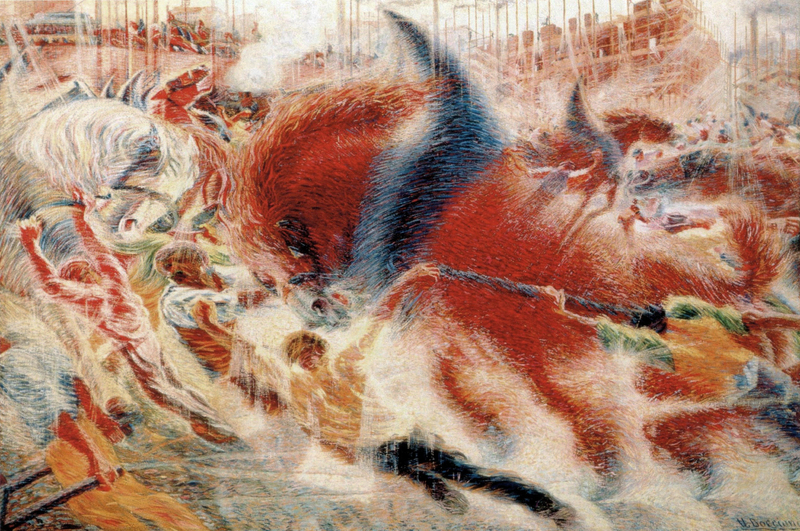The City Rises
The City Rises composes all dominant motives of the Italian Futurist movement onto one canvas. Boccioni is showing the ongoing construction of a power plant in Milan, Italy while hounding the “speed and movement” (wallector.com) tropes of Futurism. Boccioni portrays a period of time rather than a concrete moment in the future. One of the first prominent features of this work is the bright tones used; the heavy use of white, red, and yellow in this piece gives us a feel for the energy of the surrounding movement. “Dynamism” is a common futurist term referring to the duality between speed and technology, which is often depicted in these pieces. In The City Rises, the speed theme is shown through the fast and blurred strokes seen amongst the men and horses of this piece. On the other hand, the technology is prevalent in the background of the canvas, shown through the precise scaffolding structures, tall smoke stacks, and complex highrises. With horses being a key symbolic figure for the Futurists, the five in this piece catch the eye as a dominant force trying to be controlled by the workers. The strained, muscular bodies failing to contain the horses shows that the speed and sheer power of the movement cannot be restrained. Horses in literature and art can often represent a mixture of freedom, determination, and power. These themes run parallel with the Futurists desires, wanting to free themselves from the artistic and cultural past of Italy.
“Boccioni's ‘The City Rises’: A Futurist Manifesto.” Wallector.com, 3 July 2018, https://wallector.com/en/blog/post/Boccioni-the-city-rises.
Boccioni, Umberto. “The City Rises.” Www.moma.org, 1910, Museum of Modern Art, New York, https://www.moma.org/collection/works/79865? Accessed 20 Nov. 2021.
